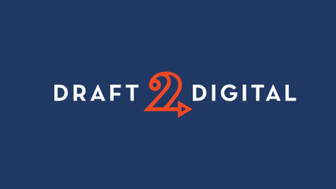 Big news - we have recently put some of our titles onto Draft2Digital. We decided to do this because, by keeping them exclusive to Amazon, we were actually narrowing our sales channels when we should really be going wider. Not everyone uses Amazon to purchase their books, so we were losing quite a lot of opportunities to offer our titles to those people. There was one advantage to using Amazon. That was their KindleUnlimted (KU) programme. We get a lot of downloads through KU and they account for a significant proportion of our revenue. But if we put our ebook product onto other distribution platforms, we aren’t able to use KU, so we risk that income. And yes, Amazon do check the other retailers to make sure we aren’t cheating.*  So, we analysed our income by title and it didn’t take a lot of time to realise that many of our titles aren’t read using KU, though they are purchased in ebook or paperback format. For some reason those books don’t seem to attract KU readers. Five of the titles are non-fiction and that may have something to do with it. The remainder do get the occasional KU download, but not enough to justify us making them exclusive to Amazon. OK, back to basics; just who are Draft2Digital (hereafter referred to as D2D)? Basically, they are similar to KDP in that they allow Indie authors and small publishers like ourselves to upload their books to them, which they then distribute to retail channels. They also offer formatting services, cover creation (not cover design as such) and a few other whistles and bells. But their big selling point is that they distribute books through a wide range of on-line retailers.  How many? Here’s the complete list (at time of writing): Apple Books, Barnes & Noble, Kobo, Scribd, Smashwords, Tolino, Overdrive, bibliotecha, Baker & Taylor, BorrowBox, Hoopla, Vivlio and Palace Marketplace. They will also distribute via Amazon if your book isn’t already on there, so it really is a “one stop shop”. Several of the companies listed above are aimed at the book borrowing market rather than the retail market, so in that respect they are similar to KU. I’m not suggesting that is 100% of the on-line book market, but it is a lot more than Amazon by itself. If you are considering distributing your book as an audio title, they also offer audiobook services, including helping you to find a narrator. This service may be cheaper than ACX.com, but only marginally (see previous blogs on the subject of audiobooks). 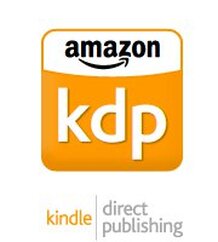 So, what is D2D like to work with? First of all, using the files we had already uploaded to Amazon caused us problems. Any reference to Amazon in the MS caused it to be rejected, as did references to ebooks in paperback MS’s. As we often insert a preview for another book at the end of an MS, with a link to its Amazon sales page, this meant having to go back and remove those references and links. You may also have to remove contents pages if you want D2D to insert a contents page complete with hyperlinks. The same applies to copyright pages, dedications etc. however, you can opt to use the ones that are already embedded in your files.  If you already have a cover for your ebook then it will probably upload OK to D2D, but when we uploaded our paperback covers we had some rejected because the back cover blurb was “blurred”. We had used shadowing behind the text and D2D’s quality bots couldn’t handle that. They also reserve more space for an ISBN than Amazon, so if any text encroaches into that space it will result in the cover being rejected. Paperback covers also have to conform to the D2D standard trim size, which is 5.5 x 8.5 inches (14 cm x 21 cm). If your covers are bespoke, created for you by a designer, you may have to go back and get them to adjust the size. However, if you created your own cover using packages such as BookBrush, you can alter the size yourself (don’t forget to adjust the positions of the text). I guess that sort of thing is all part of the learning curve for a new app, but it was frustrating and continues to be so as we have to change our cover designs and edit our MS’s in order to overcome these issues. 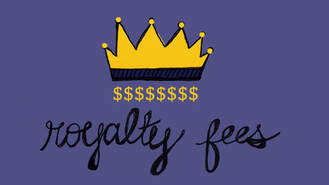 What about royalties? As with Amazon, you can set your own price for your books, which means you have control over the amount of royalties you receive once D2D and its partners have taken their share of the sale price. Unlike Amazon, which has two options for royalty percentages, D2D has only one, which is the sale price minus distribution charges. You also have the capability to run price promotions for ebooks and you can price your book to make it free, but not on Amazon. The price for Amazon will automatically be set to a minimum of 99c (99p). What is worth noting is that the printing costs for paperbacks seem to be much higher on D2D, which makes them less competitive than Amazon. To reduce the price to what you may have set on Amazon, you would have to reduce the amount of royalties you earn. In some cases it may not be possible to price-match to Amazon and still earn any royalties at all. Conversely, you could increase your paperback prices on Amazon, but that may make them less competitive compared to works by other authors. If you aren’t as famous as J K Rowling, you can’t charge J K Rowling level prices. 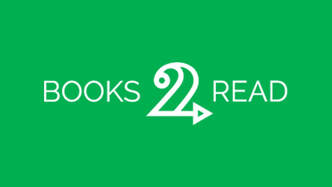 In terms of marketing tools, D2D has a partner site called Books2Read (hereafter referred to as B2R). It's basically a resource for readers to use to find books they may like. When your book is published its details are automatically copied across to B2R along with a “universal book link” (UBL) that allows the reader to go direct to their preferred retailer in their preferred country to buy the book. One of the tools B2R offers to authors is “new release notifications”. These are automated emails sent to readers who are registered on the site and who are signed up to your profile, so once you have uploaded your book, this tool helps your readers to find it. This is something I think gives D2D a real edge over Amazon, because any marketing you do through them has to be paid for.  OK, it’s a one shot deal, but one shot is better than no shot at all. It’s also fully automated, so you don’t have to do anything except register your book for the notification system and D2D has a pop-up for that which appears when you press the "publish" button.. You’ll know when the email notification has been sent, because you’ll receive a copy. Other than B2R there are no real marketing tools for you to use. They don’t have an equivalent to Amazon Ads, which is a shame. Somehow I think D2D is missing a trick here and is also limiting the ability of authors to market the books they have so painstakingly uploaded onto their site. On the other hand, it does create a “level playing field” for all their authors, because you can’t “buy” success through advertising. Everyone has the same chance of being discovered if readers are looking for their genre of books. Of course, you still have the option to advertise your books using other channels, such as Google, Facebook, Twitter et al. Make sure you include the UBL in your advert so that readers buy it through D2D rather than go looking on Amazon.  So, has this switch resulted in thousands of new sales? Well, it’s early days yet. What I can tell you is that we had sales within days of uploading our first book to the site. Not many, I’ll admit, but sales are sales and we hadn’t done any marketing work for the book. Readers found them for themselves and that rarely happens on Amazon. We’ll let you know more when we start to get some results worth talking about. In the meantime, check out D2D for yourself and see what you think. It costs nothing to look. * We know Amazon (actually their bots) goes looking, because we got a “cease and desist” email from them for one of our books which was uploaded to Smashwords some years ago and we had forgotten to take it down when we enrolled the same title on KU. Amazon threatened to withdraw our earnings for the book if we didn’t unpublish it from Smashwords. They’d actually found the book on the Barnes & Noble website, who Smashwords were using as one of their distributers. If you have enjoyed this blog, or found it informative, then make sure you don’t miss future editions. Just click on the button below to sign up for our newsletter. We’ll even send you a free ebook for doing so.
0 Comments
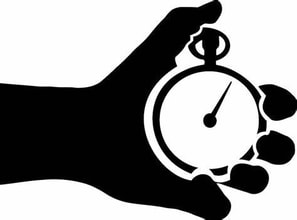 Timing is everything in life, but even more so for Indie authors who are trying to promote their books on a limited (or even zero) budget. Here at Selfishgenie we track our sales on a day by day, week by week, month by month basis so that we can work out when is the best time to advertise our books. Some days we see more people buying books than on other days, so they are the days we want to advertise, so that we can catch the readers' attention on the days when they are buying. That doesn’t mean to say we don’t advertise books on other days. After all, people are all unique and each person has their own shopping habits. But we know that, in broad terms, there are days when more people buy books than other days. Those are the days when we may consider increasing our advertising spend. I’ll go into why those variations exist in a moment.  By tracking people’s book purchasing habits over a longer period of time we can also work out when to do promotions. Again, I’ll go into why that may be in a moment. But that same timing issue extends to when we should launch our books. There are some months of the year when it is better to launch a book than others. I’ll be talking about the UK here, but the same rules probably apply wherever you live. All you have to do is adjust to suit your calendar. June and early July are a good time to launch a book in the UK. Why?  Because the majority of people take their vacations in July and August and will be looking for something to read while they hang around in airports, sit in their aircraft seats for several hours and then lounge around the swimming pool at their destinations. For some people this may be the only time of the year when they actually have time to read a book. This is particularly relevant for the ebook market, because no one ever takes enough books with them on holiday, so they’ll be logging their Kindles into the hotel Wi-Fi to buy even more books for the second half of their holiday and for the return journey.  Children's books - yes for July, no for January. Children's books - yes for July, no for January. Children’s books are especially popular at that time of year, because parents are desperate to keep their children occupied while travelling and during the school holidays. The first quarter of the year, on the other hand, is very bad for children’s books because (a) they are back at school, (b) they still haven’t read all the books they received from loving relatives at Christmas and (c) money is tight during the first quarter (see more below). If your books are aimed at the older reader, you will probably want to launch your book in August, because all those grandparents who have been on child minding duty over the long summer holiday period are suddenly free to go on holiday themselves in September, when the kids go back to school. I know, because that’s when I go on holiday and the hotels I go to appear more like old folks’ homes than holiday resorts. There are very few people there who are under fifty and those that are there either have no children or have children who are still too young for school. 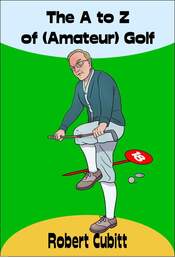 Here’s a tip for you, if you write books in a series. Take a paperback copy of Book 1 with you when you go on holiday and leave it in the hotel (most hotels have a shelf of books for people to borrow). You may snag a new reader for the rest of the series that way. Obviously the seasonal issues mentioned above are applicable to advertising spend as well as book launches. In November and right up to mid-December 2022 we promoted our golf book as a Christmas present for golfers and made quite a few sales that way – more than the whole of the rest of 2022 put together. If you want to know more about the best time to launch your books, broken down into genres, we found this helpful article. But there are others if you do a search. So, what is the best time to advertise?  Books are a popular Christmas present, so giving your advertising a seasonal boost may pay dividends and, of course, we’ve already mentioned the summer season. Think about advertising romance in the run up to Valentine’s Day and promote books as a gift for Mothers’ Day and Fathers’ Day But what about routine, week-in-week-out advertising activity? We found Friday to be the best day of the week to advertise, as that is when people go to look for their weekend reading. Weekdays are generally “early to bed days”, both for children and adults, but at the weekend a lot of people catch up on their reading and to do that they need books. Hence higher sales figures for books on a Friday. 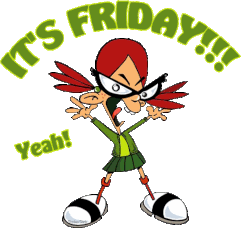 You can even refine that down a little bit if you want. Come lunchtime everyone is thinking about finishing for the week, so they may start browsing the book listings from lunchtime onwards, so you don’t need to spend so much money in the morning. Sunday evening is also a good time, especially for paperbacks. Come Sunday evening a lot of people have either finished their books or are getting close to finishing. The “forward planners” will be thinking ahead and looking towards the following weekend. Paperback readers will be ordering on Sunday evening so that their books are with them by Friday. At the other end of the scale we have noticed we get far fewer sales on a Saturday and a Monday. Saturday is probably slow because people have a lot of family things going on as well as shopping, sport and general leisure activities. Monday probably because people are back at work and won’t have much time to think about reading. 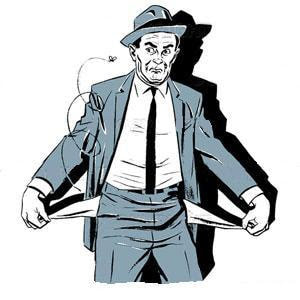 Certain times of the year are better than others for promotions. January and February* are the months when the Christmas chickens come home to roost and those credit card bills for all the holiday spending land on the mat. Energy bills are also at their highest. This means people have less money to spend and one of the places they can cut back is on their book purchases. We have seen consistent reductions in income during the first two months of the year since we started our business. So, this is a great time to do a price reduction or free book promo – especially free! Everyone can afford to buy a book that is free! Again, I’m talking to the series writers mainly. Give the first book in the series away at a reduced price, or for free, and there’s a good chance that if the readers like it, they’ll come back for the rest of the series -at the normal price - when they have a bit of disposable income in their pockets once more.  This is where you have to manage your marketing activity very carefully. No one can download a free book unless they know it is available. So, you have to be prepared to do some marketing. Social media marketing is free of course, but evidence suggests it is becoming less and less effective as a marketing channel.  Conversely, Amazon Ads, Facebook Ads, Google Ads etc are quite expensive, and you don’t want to spend a lot of money to give something away for free, even if you are going to get the money back later in sales for Book 2 onward. There is a happy medium and this is where book promotion sites come in. This year we used Book Reader Magazine and found them to be both cheap and effective. We are NOT recommending them and there are plenty of other, similar, sites who do the same job. You’ll find a list of some of them here. That site also offers some promo codes so you can reduce the cost. Book Reader Magazine cost us $15 (approx (£13) when we used a promo code and we got plenty of downloads as a result.  What was the outcome (because that is what is important)? During the first week of March we saw a massive surge in sales of the series we gave away. Some of that increase may have come about because people had a bit more cash available, but the majority of it is likely to be because they had downloaded Book 1 for free and wanted more of the same. It’s an 8 book series (so far) and we make a profit of about £3.50 per book. So, snagging one new reader that way not only repaid our investment, it gave us about an 80% profit. 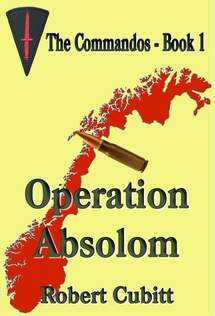 I can assure you we snagged way more than one new reader. Regardless of the season you will need to continue with your advertising at other times if your books are listed on KindleUnlimited (KU). As it’s a subscription service, readers want to get value for money from it and you want the books they download to be your books, so you have to keep pitching to them. You can expect to see KENP page reads going up during January and February as readers opt not to buy books if they are already KU subscribers. Most mainstream publishers don’t use KU, so this is a great opportunity for Indie authors to get their books read instead. However, you may want to reduce your advertising spend a little to reflect the reductions you’re going to get in ebook and paperback sales during the same period.  At this point I have to add a “health warning”. The results I’ve talked about above relate to the books we sell. You may want to analyse the sales data for your books to see if they conform to that pattern – or if they are different. We suspect that there will be similarities, but we can’t guarantee it. * Traditionally January and February were known by London taxi drivers as the “kipper season”. Kippers (a type of smoked herring) used to be a cheap food and taxi drivers ate a lot of them when their income was reduced during the first two months of the year. Presumably they would call it “pot noodle” season now. If you have enjoyed this blog, or found it informative, then make sure you don’t miss future editions. Just click on the button below to sign up for our newsletter. We’ll even send you a free ebook for doing so. This week, Selfishgenie Publishing hands over its blog to Robert Cubitt, one of our authors, who returns to tell us about his experiences in publishing an audiobook. All Views expressed are those of the author and do not necessarily represent the views of Selfishgenie Publishing.  Back in December 2022 I wrote a blog about dipping my toe into the audiobook market and whether it was right for Indie authors, given the expense of employing a professional narrator (starting prices are around £1,500 ($1,600)). You can find the original blog in the December 2022 archive. At that time, I promised to get back to you to talk about the outcomes, so here I am. I’d like to be able to report that I had a great response to the audiobook and sales were phenomenal, but I would be lying. I have made some sales, but they aren’t anywhere near as many as I hoped, or as they needed to be to recoup my investment.  I put the blame squarely on ACX.com, the platform that the books are distributed through. They are a subsidiary of retailing giant Amazon. They offer no assistance with marketing. This is remarkable, considering that ACX.com can only make money if authors are able to sell their audiobooks. Users of KDP will be familiar with the range of marketing tools that the site offers, including access to Amazon Ads. But there are no equivalents on ACX.com. Amazon Ads are available for audiobooks in the USA, but I don’t live in the USA and my audiobook isn’t aimed at the American market (but American and Canadian readers are welcome to listen to it - see below for more information). So, not much help here in the UK. But even if I wanted to sell my audiobook in the USA, that marketing channel isn’t accessible through ACX.com. There is no link from one to the other. BTW Chirp, the audiobook channel of the book marketing site BookBub, also operates only in the USA and Canada. So, not much use to us 400 million Europeans then.  The little bit of advice that is offered by ACX.com is in their blogs. I can sum it all up in three bullet points: - Find some reviewers, - Use social media (including paid advertising). - Pay audiobook promotion sites (but none are recommended so you pay your money and take your own chances). The only practical help they provide is a batch of promo codes for free giveaways of your audiobook, presumably to give to those reviewers that are queuing up to offer their services for free (sarcasm), but they offer no channel through which to distribute those, so once again the author is left high and dry.  The whole point of using Amazon Ads to sell a book is that the ads are targeted directly at people who are already looking for books to buy. The problem with advertising using social media is that people seeing an ad on the social media feed (a) might not be looking for a book to buy and (b) they have to leave their social media browsing in order to buy the book even if they are interested. Getting people to leave their social media browsing acts as a barrier to sales. If I, a humble amateur marketeer, know that you would expect the professional marketing people at ACX.com and Audible to know that too, and to follow the lead of Amazon to remove that "advertising by proxy" barrier to sales. But they don't. Or, if they do know it, they don't consider it worth the bother to do anything about it. I have to say I find this quite remarkable. After all, if the author can’t market their book, ACX.com doesn’t make any money from the book either. You would think they would be moving heaven and earth to help authors to market their books. Not only that, but the marketing activity itself can be monetised to produce revenue for them.  The faceless corporation. The faceless corporation. I don’t know who actually runs ACX.com and Audible, but they aren’t very business-like if they are finding ways of NOT making money. In addition, I have found their customer service to be less than professional. Their stock answer to every question or problem seems to be “try asking someone else”. Again, they seem intent on not helping their company to make money. I’ll give you an idea of just how unhelpful ACX.com is. After doing a Google search, I found this blog article (I couldn’t find it on ACX.com itself) about creating an Audible author page. Good idea, I thought. I’ll click the link and do that. The trouble was, there is no link. And I can’t find out how to do it through the Audible website because that is aimed at listeners, not authors. 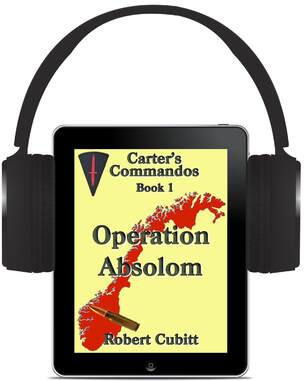 So, unless you are very good at marketing your books, you will probably struggle just as much as I have with trying to find any listeners for your audiobooks if you distribute through ACX.com. Now, you may be questioning the quality of my book at this point. After all, nobody can sell a bad book, even in audio format.. A fair observation and if the ebook and paperback versions were selling equally badly, I would agree with you. However, that isn’t the case. Operation Absolom is my biggest revenue earner, and it is so successful that the royalties from it are what paid for the production of the audiobook in the first place. Given the level of investment required, you can work out for yourself how successful the book has had to be in order for me to make the decision to produce the audiobook. 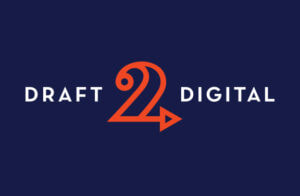 There is a slightly cheaper option. Alternative self publishing book distribution site Draft2Digital (D2D) have their own panel of narrators who offer prices from around $135 (£120) per narrating hour, giving an overall cost of approximately $1,400 (£1,300) for a 300 page book. I haven’t used them for audiobooks (I have for ebooks and paperbacks) and if you do then you can’t receive the higher (40%) royalty rate from ACX.com if you also distribute through D2D. However, it does provide a wide distribution channel, so it may be something you wish to consider. If you already distribute an audiobook through ACX.com you can also put it on D2D (using the same audio files), but you will have to reduce your royalty option on ACX.com to the 20% level. But there are no marketing tools provided by D2D either, so you will encounter the same problems when it comes to helping listeners to find your books 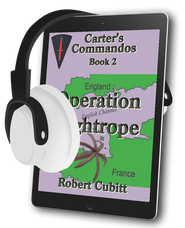 So, am I advising Indie authors not to venture into audiobooks? No, I am not. This is a growing market and Indie authors can gain an advantage by getting their books into audio before it gets too big and swamps us all. But I am advising Indie authors to consider how they are going to market their audiobooks before spending all that money, because you will get precious little help from ACX.com and D2D. If you can’t crack the marketing nut before you invest heavily in your audiobook, then it is probably advisable to proceed with caution. What about me? Am I giving up on audiobooks? No, I’m not. In fact, I’m doubling down. Book 2 to of the Carter’s Commandos series, “Operation Tightrope” is already live on Amazon, Audible and iTunes. . Again, I’m invested my royalties from my ebooks and paperbacks to cover the narration costs (more proof of their continuing success). Now I’m going to crack that marketing nut if it kills me. If I succeed, I’ll be sure to come back and let you know, so you can do it too. If you do decide that you want to get into the audiobook market, then I wish you every success. If you have enjoyed this blog, or found it informative, then make sure you don’t miss future editions. Just click on the button below to sign up for our newsletter. We’ll even send you a free ebook for doing so. 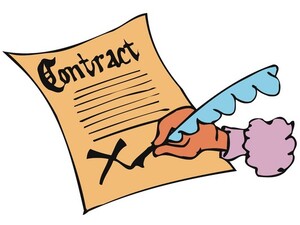 It is the dream of all Indie authors: to snag an agent or a publisher and get that elusive publishing deal. Yet so few Indie authors are able to fulfil that dream. But it is achievable, and it is probably easier than you think. However, it is also somewhat counterintuitive to do what is necessary to fulfil the dream. It may also require the author to make a few compromises. OK, if it’s that easy, tell us the secret, oh Selfishgenie. OK, we will.  The first thing you have to do is recognise that publishers hate taking risks with new authors. Risk threatens to reduce profits and there are stories in the industry of publishers being left with warehouses full of books because they took a gamble on a new author that didn’t pay off. These stories are probably apocryphal, but they are enough to give publishers nightmares. In that case how do new authors ever get signed? The answer to that is that it isn’t always the author themselves that represents the risk. It’s the type of book they are writing. The author may be the next Ernest Hemingway or Hilary Mantel in terms of the quality of their writing, but if they aren’t writing the sort of books that readers want to read, then they will never become bestselling authors. It is quite possible that in today’s market, Hemingway would also be unable to find a publisher because his type of books aren’t selling these days (my speculation, of course) Which is why new those authors represent a risk. This is where things become counterintuitive.  You may think that to get that elusive publishing deal your book has to be different from what is already out there in the bookstores. You would be wrong. It's the exact opposite. Your book has to be the same (or at least similar) to what is already out there. To de-risk their industry, publishers follow the reading fashions. If J R R Martin’s books are selling, then publishers are hungry for books just like his. If Lee Childs’ books are selling, then publishers will also be hungry for books like his. So, if you want to snag that elusive publishing deal, your books have to follow the fashion. By publishing books that are what the public is reading at that moment, publishers are able to de-risk their products Give the public what they want and they’ll come flocking to your door. 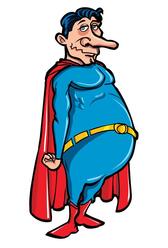 We already see this in cinema, of course. In the last decade, 5 of the top 10 box office hits were superhero movies, four of which were from the Avengers franchise and the 5th was Black Panther. Of the remaining 5 one was from the Star Wars franchise, another was from the Jurassic Park franchise and two more were Disney films, which are always popular. If that’s what the public wants, is it any surprise that we get so many superhero films, Star Wars films, Disney films et al? And the same applies to books. This desire to follow the fashion then feeds back to agents. If publishers want a particular type of book, then agents will want to find authors who are writing that type of book. Because it is easier, and more lucrative, to sign authors who are writing the sorts of books that publishers are looking for. So, sending an agent something different is not going to get you signed. Of course, going to Bloomsbury or Scholastic Press and offering them a Harry Potter clone isn’t going to help the Indie author. After all, those two publishers already have the original Harry Potter. No, you need to approach a publisher/agent that hasn’t got Harry Potter and offer them your clone.  At the same time as responding to fashion, publishers also create reading fashions. After all, if all the publishers are producing Harry Potter clones, then that limits the choice for readers, so they buy them even if they would actually welcome a change. We see this each year with clothing fashions. If manufacturers decide that green baseball caps are going to be “in” this year that is what they will produce, and they will pay “influencers” to get the public to wear them. Pretty soon all you will see will be green baseball caps! Then, next year, because everyone already has a green baseball cap, they’ll switch the colour and repeat the trick so they can sell more product. And we fall for it, so we only have ourselves to blame. Exactly the same methods apply with books. But you don’t want to write Harry Potter clones or Jack Reacher clones, do you? 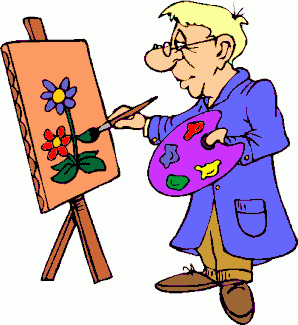 You have your own story ideas and those are the ones you want to work on. You have “artistic integrity” and you won’t be dictated to with regard to your plots, your characters or your writing style. OK, I respect that. But artistic integrity doesn’t put food on the table. When you are a big name writer you have a bit of power that you can exert. Your name alone will sell books. That means your publisher is likely to be more flexible about what they will buy from you. And if they aren’t flexible, your name is big enough to open doors to other publishers who might allow you to write what you want, because you no longer represent a risk. You are “box office”, as they say in the movie making world.  It’s the reason why celebrities who can barely write their own names are able to get publishing deals. It’s not the quality of the book that sells it, it’s the name on the cover,. But you have to be a “name” first and that may mean compromise. Write what the publishers want now, so you are granted the freedom to write what you want to write in the future. So, what should you be writing right now in order to snag that contract? The answer to that is likely to change from month to month and year to year, which isn’t helpful. The best sellers list on Amazon will tell you what is fashionable right now as will the Sunday Times (or New York Times in the USA) best sellers list, but that won’t tell you what will be fashionable in 6 months’ time when your book is ready for querying. Fortunately, fashions in reading change quite slowly, certainly slower than they do in clothing, so you probably have time to get on the bandwagon with your next book. The top three genres (UK) to write in are Crime and Thrillers (33% of the market) , Fantasy Fiction (22%) and Action & Adventure (20%). There are, however, subdivisions below those headline genres and not all of them are as popular as others. But what you will probably notice is that the most popular books right now are character led, not plot led. Less popular at the moment are Modern Classics (No idea, but they are only 11% of the market), Horror (11%) and Short Stories (14%)* Some genres are so unpopular that their market share doesn’t even register on the graphs.  Some publishers do allow themselves to take a few risks. They look for good new writers and offer them publishing deals. However, they won’t throw a lot of money into marketing their book. At least, not the first one. The first print run of the hardback version of Harry Potter and the Philosopher’s Stone was only 500 books, most of which went to libraries. That’s how much faith Bloomsbury had in J K Rowling for her first book. Fortunately it was the American market that saw its potential and made her the best-seller she is, while the UK market caught up later. So, yes, you might find an agent and a publisher willing to take a risk on you even if you aren’t writing whatever is fashionable. But it is probably going to be a harder furrow to plough. * Figures for 2020, the most recent we could find from a reliable source. If you have enjoyed this blog, or found it informative, then make sure you don’t miss future editions. Just click on the button below to sign up for our newsletter. We’ll even send you a free ebook for doing so. 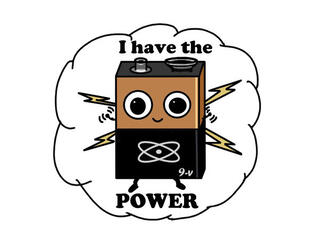 In last week’s blog I discussed what made up a culture, because it is so important when it comes to anchoring both your fictional world and also your fictional characters. In several places I used the word “power” as something that was needed to exert control. Who holds power and how they use it is an important part of culture as it shapes the way people behave, which is why culture is important in a novel. Understanding power is also very important in developing characters and plot, as I hope to demonstrate. Give the right characters the right levels of power in the right form and at the right time, you can do anything in a plot. A lot of that power isn’t actually held by the protagonist or antagonist, it is held by other characters, which makes for a more complex, and therefore more satisfying, plot.  Is your protagonist powerless? Is your protagonist powerless? However, this makes it sound as though there is only one sort of power. It is clearly visible in an antagonist, who arrays all sorts of powerful forces in order to frustrate the protagonist. However, this would suggest that the protagonist has no power of their own. If that were true, then the protagonist could never come out on top in a novel. In order to overcome power, the protagonist must have at least the same level of power. Either that, or they must be able to strip the antagonist of their power, in order to provide an equal “match up”. This can be seen in Lord of the Rings, where Frodo’s allies keep the Dark Lord diverted, concentrating on battles further away, while Frodo and Sam sneak into Mordor by the back door. They use alliances to create a large enough power base to take on Sauron. Stripping power away from the antagonist by a weaker force is demonstrated in two films. The first is Star Wars, where a single X Wing fighter destroys the Death Star. The same trope is used in Independence Day when Will Smith and Jeff Goldblum plant a nuclear device inside the aliens’ mothership, robbing them of their defences. 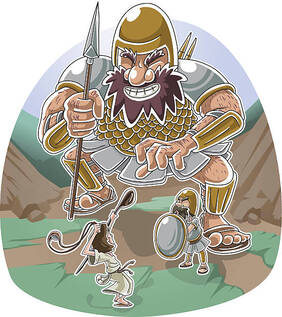 What sort of power did David use to slay Goliath? What sort of power did David use to slay Goliath? Both these acts render the antagonist(s) powerless, allowing the protagonists to triumph. Both of those are really David and Goliath stories told a different way. But when he accepted the challenge of Goliath, David knew something that Goliath didn’t. He knew he possessed “expert power” (see below). And if you think that power games are only the tools of action adventure novelists, then think again. It requires power of some sort to thwart the lovers in a romance. It just isn’t the sort of power that comes from the barrel of a gun (well, not usually). So, what sort of power can the author use to win the conflicts into which we send our protagonists? Studies of power structures have been carried out in business so that they can be understood. But don’t assume that they only apply to business. Businesses are made up of people and power is only of use if it can be used to control or influence people. Politics works pretty much the same way and if you belong to any sort of organisational structure, right down to the village darts team, you will encounter some sort power being used to some degree.  The fact that you don’t always see that power being wielded is a mark of how subtle its use can sometimes be. You don’t always have to plant a nuclear device in an alien spaceship in order to wield power. What types of power are there? Amarjit Singh PEng F.ASCE published a paper in 2009 which analysed this question, drawing on the findings of several other researchers. He studied several sources of power. 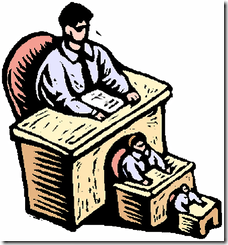 First we have legitimate power, aka positional power. This is power that “comes with the territory”. A Prime Minister or President will wield that sort of power, as will the CEO of a company. This is the sort of power that we are familiar with, because even the Evil Emperor will regard their power as being legitimate. After all, there is no one (they think) that can deny them their power. Crime bosses exercise what they regard as legitimate power, backing it up with violence and the use of weapons when needed. Just like Presidents or Prime Ministers who take their countries to war. The circumstances may be morally different, but the same sort of power is applied to make it happen. The police hold legitimate power, because they are established under laws passed by the government. However, they can also abuse the power invested in them. Within any organisation there are people who hold power. The amount of power may vary depending on their pay grade, but they all have it to some degree. Even the guy or gal on the production line has the power to bring it to halt if they walk off the job. So that one was easily dealt with.  Being able to bestow rewards is a source of power. Being able to bestow rewards is a source of power. Next we have “reward power”. Even a quite junior manager can exercise reward power, deciding who will receive bonuses, who will get a promotion and who won’t, right down to who gets the easy work and who gets to clean out the sewer. That sort of power makes sure people do what the manager wants them to do. A lot of this power is delegated from above, but it is something that can be used or abused. But ordinary members of the public also use reward power. We tip waiters and cab drivers for good service – and they know that if they do a good job they’ll get their tip. (I know this is different in the USA where everyone gets a tip regardless of whether they provided good service, but I’m not in the USA). That means the customer holds the power to control their behaviour. We may offer a Maitre D a small bribe to find us a better table (or any table at all). We also use reward power when we decide to go back to the same restaurant because they provided good service or avoid a restaurant that gave bad service. We call this “consumer power” and we all have it to a certain degree. All we have to do is adapt the concept for our novels. The prospect of a reward can get people to do what we want in a story. Treasure Island is based on the idea that if the crew of the Hispaniola cross the world with Squire Trelawney, there will be a reward at the end of it, when the treasure is found. That is a clear use of reward power in a novel.  Coercive power is fairly self-explanatory. It is based on fear. “Do what I tell you, or it won’t go well for you”. This isn’t seen in the workplace as often as it used to be, employment tribunals have seen to that (in the UK anyway), but it is still found outside the workplace. The coercion doesn’t just have to involve the threat of violence. Blackmail is a form of coercion, as are threats of isolation from the group – what we call “Being sent to Coventry”. There are probably other forms of coercion you can think of. Moral blackmail - convincing people "it's the right thing to do" - is also a form of coercion. What some people think of as persuasion or influencing can also be interpreted as coercion if it is taken beyond certain ill-defined limits. And, of course, coercion is often seen in bad relationships.  In the land of the blind, the one eyed man (or woman) is King. This alludes to expert power. If you know something, or understand something, that nobody else knows or understands, it is a source of power. This is often seen in wage negotiations. Back in the 1970s and 80s IT experts could pretty much write their own salary cheques, because so few businesses knew how to use computers. Today, however, that knowledge is commonplace and IT wage levels aren’t as generous as they once were. So expert power isn't always permanent. In fiction, we often make our protagonists experts in some field or another. Robert Langdon, the protagonist in the Da Vinci Code, is an expert in symbology. Tom Clancy’s protagonist Jack Ryan started out as an expert in interpreting military intelligence. Both are ordinary people at heart but become powerful through their application knowledge. In Lee Child's "Jack Reacher" novels, Jack is an expert in many fields. Even if we don’t make the protagonist an expert like Robert Langdon, we will give them special skills that they can use, such as being experts at unarmed combat. That is a source of power when they get into a fight and allows them to win. As mentioned much earlier in this blog, David had expert power which he used to defeat Goliath. He was an expert in the use of a slingshot, which negated Goliath’s size and strength. In cosy crime novels, amateur detectives outshine their professional counterparts by applying their expertise to solve crimes. Because they aren’t hide-bound by procedure, they can let their expert knowledge take them in directions the professional couldn’t or wouldn’t consider (at least, as far as fiction is concerned they wouldn’t consider). But in the end the amateur still requires the legitimate power of the police to make the actual arrest. So, you have two sources of power working within one book. If the murderer is also an expert in poisons, that is another source of expert power – which gives them the power to commit murder.  Charisma is a source of power. Its proper name is “referent power”. We often hear of charismatic leaders. We might also say that people admire or worship them. We see this a lot with celebrities, who use their referent power to become rich. Its basis is entirely due to how one person views another. If you don’t regard a person as charismatic (like a few politicians I could name), you won’t fall under their influence. People are drawn to charismatic people and are happy to help them. Charismatic people are therefore able to use that as a source of power, using their admirers to do their bidding. The only difference between the charismatic protagonist and the charismatic antagonist is what they ask their admirers to do. Robin Hood is probably the best known charismatic protagonist (if you are religious, it may be Jesus or Mohammed). In romance a common trope is the charismatic person who holds one of the star-crossed lovers in thrall. One way that charismatic power can be thwarted is to expose a character defect that hasn’t previously been visible, such as a cruel streak. It breaks the spell and sends the lover back to the one he/she should really be with.  You scratch my back and I’ll scratch yours, is otherwise called “reciprocal power”. It can also be called “resource power” as it usually involves a trading of resources. It requires both characters to have something that the other character needs. How valuable the resources are will influence the balance of power. In this case valuable doesn’t refer to intrinsic value, it refers to how much the character needs the resource. If you have the gun I need in order to go after the antagonist, I might be quite generous in what I offer in exchange. But the resource doesn't have to be physical. Politicians, for example, trade favours in order to gain support and to form alliances. In LOTR each of the fellowship has something that Frodo needs to help him get to Mordor. The most obvious is the magic wielded by Gandalf, but Frodo would have been helpless in the caverns of Moria without Gimli's knowledge. Aragorn is the King behind whom men rally. Even Sam Gamgee has something that Frodo needs – his bravery, steadfastness and determination. Without Sam, Frodo would never have made it into Mordor. And, in exchange for the resources that each of the fellowship provides, Frodo does the dirty work for them and carries the ring. There is even a conference at Rivendell where the negotiations are held, though it isn’t depicted as a negotiation.  What sort of power do you have? What sort of power do you have? So, as you can see, power isn’t something that is one sided. In addition, the sum of the power that the protagonist can bring to bear must be at least equal, if not greater, than the power of the antagonist. Either that, or you have to find a way of stripping the antagonist of their power. James Bond has to kill a lot of henchmen before he can go mano y mano with the villain, which is no different than getting a nuclear device onto an alien mothership. As an exercise, you might want to analyse the sort of power you are able to wield in different circumstances. For example, how much legitimate power do you have? How much resource power? How much reward power and how much referent power? If you are the only person in your place of work who knows how to use the photocopier, you have "expert power" - at least until someone else reads the user manual. Although we might not always feel it, we are all able to use power at some time in our lives, even if it is only every few years at the ballot box. If you have enjoyed this blog, or found it informative, then make sure you don’t miss future editions. Just click on the button below to sign up for our newsletter. We’ll even send you a free ebook for doing so.  There was a question on Twitter recently that asked what authors thought was the most important thing to think about when world building. The Tweeter listed a few considerations, amongst which was the word “culture”. I Tweeted a reply to point out that culture wasn’t a single thing. It was a number of related things. That exchange of Tweets led to this blog. Loosely termed, culture could be described as “the way things are done around here”. But that does oversimplify things a lot.  To think of culture as a single thing is like thinking of car just in terms of its exterior shape. It may look nice, but without an engine, gearbox, wheels, etc the car is nothing more than a pretty shape that serves no purpose. A working car is a “system” - and so is a culture. My training in cultural issues came while I was working for a living in business and at that time many businesses were struggling to change their cultures from old fashioned, top down, target driven, tightly controlled workplaces to places where the employees had greater input which, in turn, resulted in greater job satisfaction and hence to greater productivity. Such cultural change is not easy to bring about. Managers in those businesses often thought that such a change robbed them of their power and status, so they opposed it. They couldn’t do so openly, but they became experts at undermining change without revealing themselves. So, who would secretly oppose change in your fantasy world – and why? 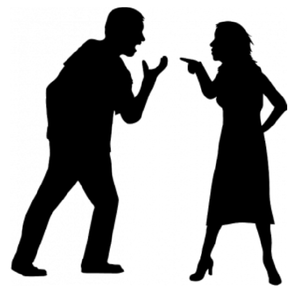 Trades unions also opposed such change, but more openly, because they wanted a workplace that involved conflict as conflict formed their raison d’etre. A happy workplace is one where conflict is rare, so the unions have little part to play, so they don’t wield any power. Finally, the employees themselves feared change, because it brought uncertainty. This was especially true in businesses with a previously bad reputation for employee relations, because there was little or no trust in authority figures. A colleague of mine, with a PhD in organisational change, pointed out that “if you can’t change the people, you have to change the people”. In other words, there may be a few casualties along the way as the people who resist change are quietly shown the door to make room for people with more open minds. But that was business. What has that to do with “world building”? 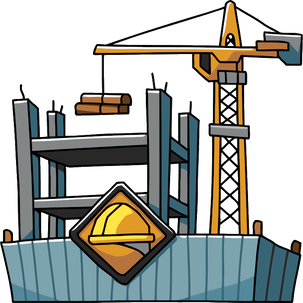 It isn’t just fantasy authors who have to consider culture. All characters in all novels exist within a culture. Some of these are easy for us to relate to, because they are familiar, while others may not be. But if you get the culture right for your story, it will make your character’s conflicts easier to understand. This is especially so if they are taken out of their own, comfortable culture and placed in one where they feel like an alien. Just going to a different town can make some people feel like that, so imagine what it feels like for someone going to a country on the far side of the world - or the far side of the galaxy. Understanding the elements that make up a culture allows the world builder to build something that is believable. The granddaddy of fantasy, Tolkien, got this right (mainly) with his Lord of the Rings trilogy and authors who have modelled themselves on Tolkien’s style tend to get the culture of their worlds right as well. 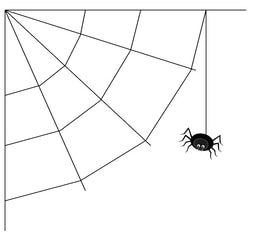 Experts on culture talk about the “cultural web”. These are the interconnected elements that make up the organisation’s culture. If you are worried about my use of the word “organisation” please don’t be. I’m not using it in the business sense. Any society is also an organisation and the world you build is just another society, supported by its own cultural web. The stronger it’s cultural web, the stronger the society that comes out of it. One of the reasons that revolutions fail is that they sweep away an old, outdated culture, but neglect to put the right elements into place to support the culture they want for the future. This leaves a vacuum into which counter revolutionaries can slip to undermine the new regime. Your fantasy world is just another form of country, with its pro and anti-revolutionary elements. If your hero wants to bring down an evil empire, they need something with which to replace it, or the old regime will simply return in a new disguise – just as Sauron was able to return in LOTR. Think about Putin and Russia in 2023, compared to the old USSR which everyone thought had been swept away in 1991. The similarities are many even though it isn’t now a communist state. But it isn’t a democracy either. The leadership and political ideology may have changed, but the underlying culture didn’t. So, what makes up the cultural web? Well, the graphic below lays it out in visual form, but I’ll take you through the various elements. 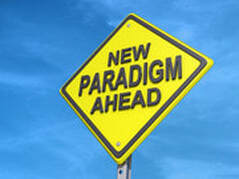 At the centre is the “paradigm”. This is the set of ideas or concepts that make up the world that you are building. Some of these are mutually exclusive. You can’t have a world ruled by a King that is also a Republic, for example. This is where your antagonist becomes very important. Whoever is running the Evil Empire has to have some reason for doing it. They must also have some idea about what they want achieve from what they are doing. This is where LOTR actually fails, for me. I can’t understand what satisfaction Sauron gest from all that power. Just desiring power is too shallow for me. Power needs a purpose, otherwise it is of no use. So, to start your world building you have to construct a paradigm for it. That is all about the ideas and beliefs that underpin whatever its happening. What does “Evil” want to achieve and what does “Good” want to put in the place of Evil. Those things will define how the people live. If it is a tyranny, then you can’t give the people any power when it comes to decision making. On the other hand, if it is a collective, then the people will have plenty of say in what happens. Those are two extremes, of course.  Surrounding the paradigm are the six inter-connected elements that make the paradigm work. Leave out one, or put the wrong things into it, and the paradigm itself won’t stand up to scrutiny. For example, if you have a tyrant that controls the lives of everyone, you can’t also have an independent legal system, because that would be able to say “no, you can’t do that” to the tyrant. Sauron didn’t have a Court of Appeal, for example. Instead he had Ring Wraiths and Nazgul. So, the most important bit of the cultural web, after the paradigm, is the organisational structure that supports it. Traditionally there are three parts: The lawmakers (tyrants, kings, nobility, politicians, etc). Then there are the people responsible for applying the law (Civil servants, administrators, local government, police, Ring Wraiths etc) and finally there is the legal system that sorts out the disputes over what the laws really mean and how fairly they are applied. Even if you have a tyrant running your world, you’ll still have a legal system – it just won’t be a very fair one. For example, the legal system may just be made up of “enforcers” who go around imprisoning, or even executing, anyone who criticises the ruler. 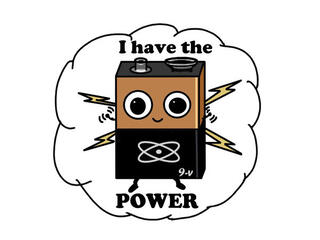 Next up are the power structures. Now, you may think that I’ve already covered those above, but not everyone who wields power is part of the organisational structure. Other people hold power of one sort or another. Businesses, trades unions, religions and more. Who you give power to in your world is quite important as those people can be enemies or allies, whichever you choose them to be. And the amount of power they wield can have a serious impact on your plot. An ally who is powerless isn’t of much use to you and an enemy without a source of power is easy to beat. Your magical figures will fit under this heading, because magic is a source of considerable power. Control systems are a bit abstract in many ways. If you are a King and you make a law, how do you make sure that the people obey that law? There has to be some way to do that. The most obvious example is the police and legal system, but there are other ways of exercising control. Fear is one (don’t stand on a balcony in Russia), wealth is another – either as a reward or a penalty. Control of other resources is a source of power, so it's another way of ensuring compliance.  So, how does your tyrant make sure the people obey? And if you want to depose the tyrant, what control systems must you dismantle or subvert? The whole point about the One Ring was that it was able to control the beings that wore all the other rings. It was even engraved on the inside of it, so everyone knew what it was! And if you dismantle the existing control system, by destroying the One Ring for example, how do you then exercise control afterwards? Or do you let your world descend into anarchy? 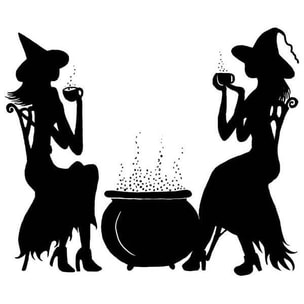 Rituals and routines form an important part in maintaining control over people. Getting people into church (or a mosque or a temple) every week, for example, prevents adherents to the religion from drifting away. The more people you have in your religion, the more power you wield, so you don’t want to lose any. It is also where messages can be sent out and heard. Historically, the pulpit has always been used by governments to send out its messages and to exercise control. I’m sure we can all think of countries where this still happens. But those aren’t the only rituals. Weddings, funerals, christenings, workplace meetings, even getting together once a week for a family meal, to watch TV or go to a football match, all form part of the rituals that identify us as being part of a community. Taking part in a ritual says “I belong here.” They also say “I am conforming, so you don’t have to send me to prison or execute me.” They can be used for good as well as evil. 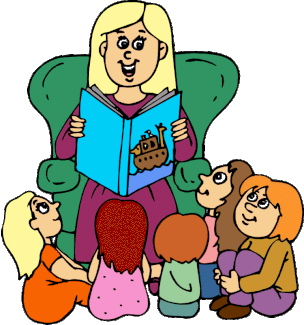 Believe it or not, stories play a very important part in culture. Stories about heroes encourage the sort of behaviour you want to support, while stories about villains tell you what sort of behaviour you want to discourage. It’s why Bible stories are told, it’s why Aesop wrote his fables and it’s the way the media influences public onion on a wide range of issues. (and you thought they just reported the news) But the heroes and villains of these stories will be different in every culture. In a communist country the heroes might be Marx and Lenin. In Britain Robin Hood is a hero, which is no mean achievement for a thief. Marvel and DC comic books are all about telling stories that express American values. Cults create heroes out of ordinary people, often stretching the truth or telling lies to make the person seem more significant than they were. The media often creates heroes – and villains. Sometimes they even start as heroes and then get turned into villains when the media wants to change the narrative. You will be familiar with the old saying that one man’s terrorist is another man’s freedom fighter (Nelson Mandela). And one man’s despot is another man’s saviour of the nation – politics tells us that because we all see politicians as one or the other depending on which side of the fence we are viewing from. It’s the stories that are told about them that make them one or the other. 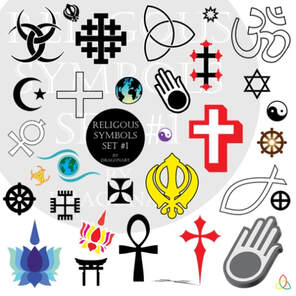 Finally, we have the symbols of our culture. Many of these are physical, such as flags, buildings, coats of arms, etc. We have symbols of wealth that encourage people to strive to achieve. Religions are very big on symbols, as they are with rituals. We salute the symbols we support and we tear down those we despise. But there are also more abstract symbols with which we engage. Symbols may take the form of songs (national anthems are a symbol), the sports we play or watch, etc. The language we use is a symbol, as are phrases such as “motherhood and apple pie” because they are symbolic of cultural values. If you wear any sort of badge (including wrist bands etc) or you wear a tee-shirt with a slogan on it, you are wearing a symbol that declares your allegiance or an ideal you support. The same will apply to your characters. I'm sure that we can all think of symbols that have played a powerful part in events. A swastika will forever be a symbol of hate. So, a lot to think about if you are a world builder who wants to create a world that is believable. I have used mainly real world examples to illustrate what I mean, so if you are a fantasy author you will have to imagine the equivalents for your world. But with a strong culture that your readers can identify, the hero will be able to do things to change the culture for the better and the villains will oppose those changes, which makes for a more satisfying plot. Your hero may spend a lot of time killing dragons, but what do they do with the dragon’s horde once the dragoon is dead? If they keep it for themselves, they are just as bad as the dragon (Thorin Oakenshield in The Hobbit), so they must use it to either support or change the paradigm you created for their world. If you have enjoyed this blog, or found it informative, then make sure you don’t miss future editions. Just click on the button below to sign up for our newsletter. We’ll even send you a free ebook for doing so.  Never judge a book by it's cover. Every picture tells a story. Which of those two old sayings resonates most with you? For us it's the second, because book covers are supposed to tell a story and there is no doubt that readers make judgements about them. So what story is your book covers telling? When readers do searches for books, or even when they are just browsing through the listings, what is the first thing they see? It is one of two things – either a book’s title or its cover. Sometimes it’s both because the title is on the cover anyway. I’m not going to talk about titles. There are too many theories about what makes a good title and, so far as we can tell, one theory is as good as another. Here’s one we found, but there are hundreds more. But the same can’t be said for covers. They have to convey so much information in a simple image and, sometimes, it’s easy for them to convey the wrong information. 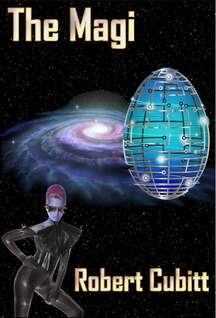 Take the book on the right which was, until recently, the cover for the first book in our Magi series. We had thought it was quite a good cover, which is why we stuck with it when we signed the author. That was until we got a bit of feedback that told us we were way off track with it. Someone had emailed us asking if we would be prepared to provide a few paperback copies of one of our books for discussion by their book club. They were raising money for charity through a small attendance fee and income from tea and cake sales and, once the books had been read, they would be sold second hand, also to raise money for charity.  Happy to make our contribution, we happened to have a few spare copies of The Magi lying around the office, so I emailed her a synopsis and the cover image. We were quite taken aback when the lady replied “We are a church group and aren’t in the least bit interested in a book about BDSM. Thanks for the offer but we’ll go elsewhere.” (If you are an innocent type who is unfamiliar with the term BDSM, we don’t suggest you Google it). We were puzzled by this response, so we emailed back asking what she meant, to which she replied that with the leather clad lady on the cover, it was clearly a book of an erotic nature and that BDSM was implied. 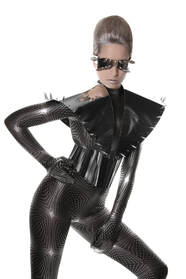 We emailed back to assure her that the book had no erotic content at all (sorry if you are disappointed by that) and peace was restored, but the book still wasn’t accepted because, with that cover, they didn’t want to sell it on their second-hand book stall. But we had learnt a valuable lesson. The cover was designed by a previous publisher, with whom we are acquainted, and I feel certain that he had no intention of implying that the book had anything to do with BDSM. But, looking at it in light of that response from the book club, I could now see what the lady was getting at. And the image of the leather clad woman appeared on the cover of all 9 books in the series, and on the box set. It was part of the “branding” of the series.  Then there are the other two elements used on the covers. The inclusion of the image of a distant galaxy is appropriate as it’s a sci-fi book. That was also part of the series branding. The third element, however, in this case an “electronic egg” changed with each book in the series, to tie in with the plot of the book. With doubt now weighing us down, we started to wonder about that suitability of that egg image, too. What did it suggest to the readers?  So, we asked a few of our readers for their opinions. The general consensus was that it was confusing. How could you have an electronic egg? What would an electronic egg do? Why was the egg floating in space? Was it some sort of spaceship? What had the egg to do with the woman? Was that the way babies were born in the book? Well, if the cover was causing as many questions as that, it clearly wasn’t doing its job of selling the book. As it happens, the answers to the questions are contained within the book but, of course, no one was going to buy the book to find that out if they were confused about it in the first place. One thing we know is that readers don’t like to be confused before they even read the first page. In fact, it’s only the readers of crime fiction (and not all of them) that are willing to be confused by their books. 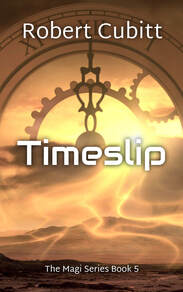 So, we decided that (a) the book’s image sent out the wrong message to some people and (b) it confused other people. Which was, perhaps, why the book and the series hadn't been doing as well as it deserved. It is rather good, as many sci-fi readers have discovered (but you would expect us to say that). So, we set out to create 9 new book covers that presented a less confusing message. In fact, all we wanted the images to say was “this is a sci-fi book”. One or two of them do hint at the content, the ones for “Cloning Around” (Book 4) and “Timeslip” (Book 5 – image to the left), but the others are a little bit more generic. 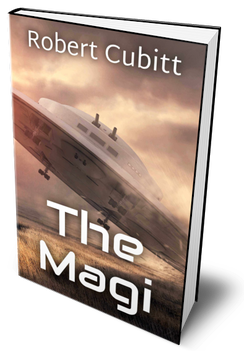 If they say anything it’s “This is sci-fi and weird stuff will happen”. (BTW, you can find out more about the books shown on our "Books" page or by clicking on the images) So, what does your cover say about your book? Does it give out an unintentional message, the way ours sent out a BDSM message? Does it confuse the reader? Is it different enough to make it stand out from the crowd? Because that third question is also important. When readers do a search by genre, they get presented with list after list of books, which they then scroll through. The cover of your book has to stand out from the crowd if you want the reader to click on it and find out more. If the cover looks too similar to the ones above and below it, the reader’s eyes are going to slide right past. Yes, do be bold, be different; but make sure that the key message about your book is plainly understood from its cover image. If you have enjoyed this blog, or found it informative, then make sure you don’t miss future editions. Just click on the button below to sign up for our newsletter. We’ll even send you a free ebook for doing so. 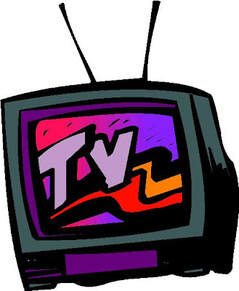 Big businesses spend a lot of money on advertising. I think we all know that. They spend it because it works, otherwise they wouldn’t do it. One of the reasons they spend so much on advertising is because they keep launching new advertising campaigns. They will run a campaign for a few weeks or maybe a few months, then they’ll stop for a while. Then they’ll start a brand new campaign with different ads. The ads may be similar, using the same characters or the same voices, but they will look different. The characters will be in a new setting, or the voices will be fronted by new images. But it’s the same product that is being advertised. So why go to the expense of re-making ads so often? Why not just continue using the same campaign all the time?  It’s because we, the public, get used to seeing an ad, so after a while we don’t pay it any attention. We need something fresh to make us watch the ad and hear the message once more. It’s a bit like teenagers being told to tidy their rooms by their parents. If you thought that your teenager isn’t listening anymore, you are probably right. They’ve heard it so many times, they’ve “tuned out” the message. And we all do it. Which is why advertisers spend so much money trying to attract our attention again by making new adverts. So, what has this got to do with Indie authors? you may ask. I’m so glad you did. "But that will stop working after a few weeks." Indie authors spend a lot of their time using social media to promote their books. It’s free unless you use the paid advertising facilities. The most common way to use it to promote work is to post a bit of blurb and a link to where the reader can find out more. The link then pulls the cover image through from the retail site so it can be seen on the social media site. That’s fine if you don’t want to pay for advertising. But that will stop working after a few weeks. Like adverts for big businesses, people will soon “tune out” your advert because once they’ve seen the cover, it is too familiar to bother with. They either bought the book several weeks ago, in which case they aren’t going to buy it again, or they are going to scroll past it. So, the indie author has to do what the big businesses do. They have to “refresh” the message. How can you, as an indie author, do that? Well, the image is the first thing to look at. Are you relying on the link in the post to reproduce the book’s cover from the sales page on Amazon, or another retailing site? If you are, then you can’t change the image unless you change the actual cover. But, actually, you can. 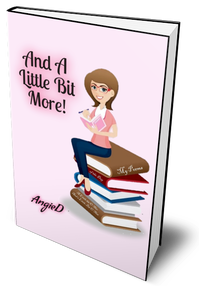 You can upload a new image into your Facebook, Twitter, Insta, etc post. That way it will take priority over the link to the sales page and will be the image that is seen. The link is still there for people to click on, but the image you use can be changed in multiple ways to keep the message fresh. It also has the advantage that you can be more creative with the image and do things that a simple link to Amazon (or whatever) can never do. You can create 3D images of your book’s cover.  You can overlay the 3D image onto an atmospheric background, along with some text. If the book is part of a series, you can show two or three covers side by side in a single image. You can change the orientation of the image to make it more suitable for viewing on a phone or tablet. Ultimately, you can create a “trailer” for your book, using video imagery alongside your book’s cover. That is really eye catching. By now, some of you will be asking “How can I, an impoverished author, create those sorts of images?” Well, if you can use PowerPoint you can do some of that. You can even make videos if you download free apps like “Moviemaker”, which can join together images created in PowerPoint, accompanied by a narration, text or music. If you want to invest in some software to help you, there is Photoshop, Canva and one we reviewed a couple of weeks ago, called Book Brush, which specialises in creating those sorts of images for authors. There are probably other packages available, but we’re not going to list them all. Will it cost much? Well, somewhere between £100 - £200 ($110 - $220) will probably cover it. 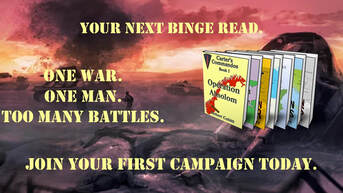 Immediately some of you will be saying “I can’t afford that.” To which I will reply “Can you afford not to sell any books?” If your books aren’t selling, then doing nothing is not an option. Einstein defined insanity as doing the same thing over and over again and expecting different results each time. I’ll put it a slightly different way: If you always do what you always did, you’ll always get what you always got. If you want a different outcome, you have to do something different. That applies to life in general, of course, but this isn’t a philosophical blog. Just be assured that if your books aren’t selling using whatever methods you are using now, they will continue not to sell unless you change your methods. And what you do has to be within both your ability and your control. Unless you want to contract an expensive marketing agency to promote your book, you have to do whatever it is within your power to do. "I know you don’t want to hear this but, by itself, using social media for free is never going to turn anyone into a successful indie author." One of the ways you can do that is to change your post’s images and messages at regular intervals. And to do that you need the right tools. I will admit that there is an element of risk involved here. You may spend money on buying an app to help you create more or better images and you may not increase your book’s sales at the end of it. But, on the upside, if it works and you sell more books, your investment will repay you, because you can use those apps time and again to create more and more new images. But rest assured, if you don’t spend the money, nothing will happen anyway. Success doesn’t come for free, as any indie author who is selling a lot of books will tell you. We are selling quite a lot of books because we are spending money. We aren’t a big business so we can’t afford to spend much. But if we didn’t spend anything, we wouldn’t sell enough books to cover our day-to-day running costs. I know you don’t want to hear this but, by itself, using social media for free is never going to turn anyone into a successful indie author. If you have enjoyed this blog, or found it informative, then make sure you don’t miss future editions. Just click on the button below to sign up for our newsletter. We’ll even send you a free ebook for doing so.  In last week’s blog we asserted that understanding a protagonist’s motivation was one of the critical factors in creating interesting characters for stories. In fact, we went further than that and said authors should be doing the same for antagonists as well. But in order to do that we also need to understand how and why motivation works in general otherwise we can’t attribute the right motivators for the correct reasons. For example, if our story involves a love triangle, what might motivate one of the characters to abandon their love in order to make the object of their love happy? In a selfish world like ours that makes no sense. But it is a well-used trope in romance. Which is what this week’s blog is about. It’s a whistle stop tour of motivational theory and what it can do for you as an author.  Motivation or Incentive? Motivation or Incentive? The first thing to understand is that there is a significant difference between motivation and incentive. The big difference between the two is that an incentive can never be enough for a person to place themselves in jeopardy. After all, there’s no point in being paid £1 million (an incentive) if you are going to end up dead and can’t spend it. But a person may take a dangerous, high paying job if it is the only way to provide security for the ones they love. Love is a motivation, money is an incentive. To put it another way, motivation drives us, but incentives can only pull us. In fiction we are always looking for what drives the character. The lure of wealth may be an incentive for a criminal, but it carries the risk of imprisonment. So, what motivates criminals to take that risk? Understanding that motivation makes the criminal far more interesting than just the lure of wealth, which is quite shallow. 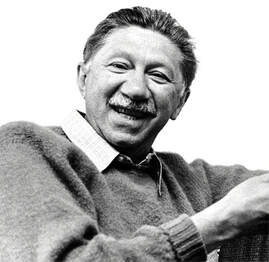 Psychologist Abraham Maslow, the granddaddy of content based motivational theory. Psychologist Abraham Maslow, the granddaddy of content based motivational theory. Theories of motivation are generally grouped under one of two headings: content and process. Content theories focus on what things provide motivation and process theories focus on how motivation occurs. To add depth to a character it isn’t enough to know what motivates them (content) it is also important to know why (process). The two together provide layers of complexity and that makes characters more interesting. Abraham Maslow is the granddaddy of content theory. He theorised that in order to function at a higher level, you first required certain needs to be satisfied. In other words, you can’t create great art if you are starving to death. So, you have to have your hunger satisfied before you can achieve your goal to become an artist. This became known as a “hierarchy of needs”. 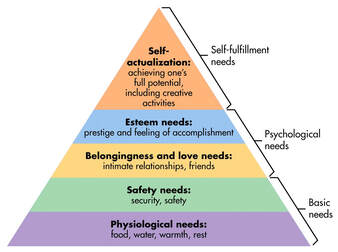 Maslow's hierarchy of needs. Maslow's hierarchy of needs. You may, at this point, be tempted to mention the name of Vincent Van Gogh, who only sold one of his paintings during his lifetime. But he wasn’t actually poor. He had a very well paid job selling art in his brother’s Paris gallery before he left to pursue his own artistic career. Van Gogh wasn’t penniless at the start of his career – though he may have been by the end. In practice this means that we are first motivated by a need to survive, but if that is secure we can then move on to be motivated by something at a higher level. In fiction this means that if a character is trapped inside a burning building, they aren’t going to be interested in catching the person that lit the match. Only after they have escaped the inferno will they turn their attention to that. A vagrant living on the street wouldn’t be motivated enough to help a damsel in distress, because their priority would be their own survival. But they can be incentivised to help the damsel because the incentive (usually money) secures their basic needs. However, if it looks like they may die in the attempt, the incentive would no longer be enough. They would need some other motive, such as love for the damsel. While good Samaritans may exist, they don’t place themselves in danger. They need motivation for that to happen. 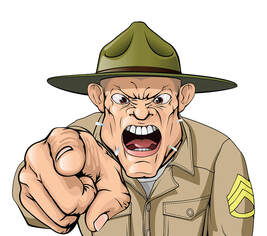 GET MOTIVATED! GET MOTIVATED! As can be seen from that example, content based motivation is a tricky business and if you don’t understand those sorts of basics, your readers won’t believe in your characters. But notice the sorts of things that appear in Maslow's hierarchy of needs diagram from the third level upwards. there's plenty of stuff hidden behind those short statements with which you can play in order to provide your characters with motivation. But what content theory also makes clear is that what motivates us isn’t constant. Our motivation can change in response to circumstances. For example, we may be highly motivated to succeed in our careers, working long hours and totally immersing ourselves in our jobs. Then one day we meet the girl (or boy) of our dreams and suddenly our career isn’t the most important thing in our lives anymore. Winning the heart of the object of our desire is now what is uppermost in our minds, to the extent that we may throw away our career in order to be with that person. That, of course, runs contrary to Maslow’s theory, because if we lose our job we also lose our security. So, it appears that some motivators are more powerful than others, at least for some of the time.  Achievement and competition. Achievement and competition. Achievement and competition are theories of content motivation studied by David Mclelland. Today this is often portrayed in fiction as a negative thing; highly motivated achievers or competitors are often depicted as criminals or cheats, driven by their desire to win at all costs. Which is odd, because the sports stars we admire the most are highly motivated by competition and achievement. Not only do they compete in their sporting arena, they also compete off the field by consistently trying to beat their own best performances, in the gym for example. Name the sports star you admire the most and you are naming a highly motivated competitor, but modern fiction suggests you will also be naming a cheat. I think we need to change that stereotype with positive competitive role models in fiction. Is competition and high achievement a bad thing? That is for you to decide, but I know of one author who uses competition as a motivator for the success of his heroic characters. 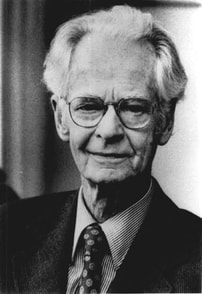 Psychologist B F Skinner Psychologist B F Skinner When it comes to process theories, there is one that is usable in fiction. It is “reinforcement” theory, developed by B F Skinner. This is based on positive outcomes of certain types of behaviour. In fact this can be traced back even further, to Pavlov and his dogs, but Skinner is better known for his study of humans. If you can imagine a misbehaving child being given a biscuit in exchange for better behaviour, it will soon learn that if it misbehaves biscuits will be forthcoming, so that the reward becomes the motivator for bad behaviour. Extending that theory into adulthood, if a character believes that rewards come from bad behaviour they will continue to behave badly – which is great motivation for criminal characters. The opposite applies as well, of course. If good behaviour results in good outcomes, then a character is motivated towards good behaviour. It may also surprise them when their good behaviour results in a bad outcome, eg their loyalty being betrayed. That could be enough for a previously good person to start behaving badly. Because when we add emotions to motivation, we start to get a powerful mix. I have already mentioned the power of love to derail a career, but there are plenty of other emotions that can affect motivation. The most challenging question it is ever possible for an author to ask is what makes one man brave and another a coward. This is especially so in stories that involve death but can also be played out in terms of moral behaviour. Nature has given us three responses to danger: fight, flight or freeze. What makes one person choose to fight, another choose to flee and another to do neither (freeze)? Fear is a natural response to danger, so all three responses should be regarded as equal, because nature gave us the choice. But our regard for bravery and our contempt for cowardice shows that we don’t regard all three responses as being equal. Very often the individuals who take the actions can’t answer our question. Ask most decorated war heroes why they did what they did, and they are unable to answer, or they fall back on clichés like “duty”. 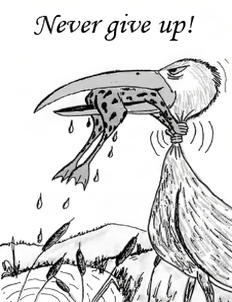 But duty only takes us so far. A soldier standing firm in the line of battle is doing his duty. A soldier that charges an enemy position in order to save a comrade is going far beyond that. It happens in real life, but quite rarely which is why medals such as the Victoria Cross and the Congressional Medal of Honour exist to recognise such actions. But in fiction it is the norm for the protagonist to exhibit that level of bravery and persistence. So, what can we give them, in emotional terms, so that they do that? And, more importantly, how can we create a backstory that shows how they developed that quality, based on what we know about motivation? This is where Skinner’s theory becomes important. If during their developmental years the character is rewarded for having beliefs and values that we admire, but isn’t rewarded for having beliefs that we detest, the qualities for which they were rewarded will become the motivators. They will also become the barriers when those qualities are undermined. The flawed protagonist is one whose beliefs and values are called into doubt by events, which cause them to question their beliefs and results in internal conflicts. The loner cop who drinks way too much whisky didn't start out that way. Something made them like that and the author gets to decide what it was. There is far more to motivation than I have had time to cover in this blog. I recommend further research. How much you include in a story is up to you, but layered characters with strong motivations are always going to be of more interest to readers than shallow characters who only respond to incentives. If you have enjoyed this blog, or found it informative, then make sure you don’t miss future editions. Just click on the button below to sign up for our newsletter. We’ll even send you a free ebook for doing so.  As publishers, we get sent a lot of books. But that’s OK because we’d be in trouble if people didn’t send us their books. It would be nice if I could say that all those books are great, and we can’t wait to be able to get them uploaded and out there with the reading public. Unfortunately, we can’t say that. I would estimate that perhaps 50% of what we are sent is never going to get published; not by us and not by any other reputable publisher, large or small. It usually takes us less than an hour of reading to make that decision. About half the rest start off well but then start to run out of steam, usually around the 30 to 40,000 word point. It was probably around that point that the author realised that writing a book wasn’t quite as easy as they had thought, but they kept ploughing on anyway, in the hope that something great would come out of it. Sadly, it didn’t, but it will take us maybe 2 – 3 hours to decide to pass on those books.  Finally, we get to the 20% to 30% of books that stand a real chance of finding readers. Those are the ones where we invite the author to work with us to try to get the book into its best possible version before we finally publish it. Some authors then pass, because they think their book is good enough already and doesn’t require our interference, or maybe they think they can get a better deal elsewhere (and maybe they can). But if a book is on our website it’s because the author has been more realistic and understands that all work can be improved, even if it is only a little bit. Just once in a while we get a book sent to us that we know from page 1 is going to be good. How do we know that? Because we get so absorbed in it that someone has to tap us on the shoulder and remind us that it’s time to pack up work for the day. Even then we’ll upload it onto a tablet so we can keep on reading it on the way home (but not if we’re driving). "Character = Conflict = Plot" Those books may be rare, but when we analyse what they have that other books don’t have, it usually comes down to just 3 things.
You will notice that I haven’t mentioned the plot. That’s because the plot is not the main driver of our engagement with the story. The protagonist and the problem(s) they face are what hooked us: character + conflict = plot. You will also notice that I mentioned the antagonist as being one of the 3 things that hooked us. Antagonists don’t get many mentions in blogs about writing and that’s a shame, because without an antagonist you only have half a story. Where would James Bond be without Goldfinger or Blofeld? Unemployed, that’s where. It is our contention (feel free to disagree) that a well-constructed antagonist is as important to a story as a well-constructed protagonist. For every Snow White, we need a Wicked Queen.  Think of Darth Vader. He starts off as the archetypal antagonist, just bad because he’s bad. But then we find out that he is Luke Skywalker’s father and, all of a sudden, he becomes much more interesting. He becomes so interesting that a considerable proportion of the next 3 Star Wars films are devoted to his “origin” story (Ep I: The Phantom Menace, Ep II: Attack of the Clones and Ep III: Revenge of the Sith). Yet time and again we get books submitted to us with antagonists so one dimensional we feel no emotional interest in them. We need to despise the antagonist in order to make it more important for the protagonist to succeed. But in those stories it is often like trying to despise Wiley Coyote or Elmer Fudd. But I’m getting ahead of myself. Number one in my list was the protagonist.  So, what makes a good protagonist? That will vary from genre to genre. For fantasy fiction they are required to be heroic, while for romance the first requirement is that they be attractive in some way (it doesn’t have to be a physical attractiveness). But that is just the surface level. The more complex the character, the more interesting they are. The more interesting they are, the more interest the reader will take in them. And the more interest the reader takes in them, the more likely it is that they will continue reading the book. It is very important that readers continue to read the book. If you are an Indie author, you need those readers to post favourable reviews of your book in order to sell more copies. And if you want to find a publisher, you have to submit a book that the publisher wants to finish reading. 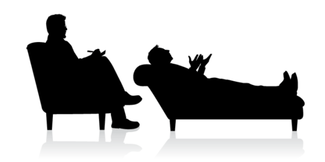 Building complexity into a character, however, isn’t simple. It takes time and it takes an understanding of people. There are a few short cuts that can be taken, tropes as they are known, such as giving them secrets, but the thing that really catches the imagination is their motivation. Why are they doing what they are doing? After all, they could just as easily stay at home with their feet up reading a good book, like the rest of us. The reader has to believe that the protagonist is dealing with the conflict because they have a really strong reason to do so. But that leaves the reader with a gigantic “why” to be answered. And the only person who can answer it is the author. 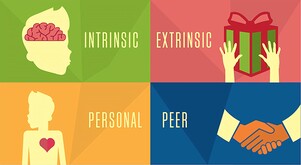 Take Jack Reacher, for example. He is a drifter, a loner, and he doesn’t have to get involved in the problems of others. Yet he always does. He is motivated to help by a range of different things, depending on the plotlines, but the one that recurs most regularly is the desire to fight injustice in whatever form it appears. It may be the injustice of a small business owner having to pay protection money to gangsters, or it may be the injustice of the law not taking a victim seriously. It may be the injustice of the police being too incompetent to find the real criminals. It may even be the injustice of someone being wrongly accused of a crime. But whatever it is, it motivates Reacher to get involved when he really doesn’t have to. So, what motivates your protagonist to get involved when they don’t have to? And why does that motivate them so much?  Internal conflict is always good for adding layers of interest to a protagonist. That can be introduced in many different ways, from a lack of self-belief to questions about the morality of what they are doing. It is especially useful when internal conflicts start to impact on whatever goal the character is pursuing. Think about a vegan being attracted to someone who works in an abattoir – can you imagine the complexity of making that relationship work? It doesn’t always have to be as blunt as that example. In fact, subtlety often makes it more interesting, especially if the internal conflict is revealed slowly over the whole book rather than in one big lump, so that the reader says “Ah, now I see what the real problem has been all along”. To really get to grips with both motivation and internal conflict you have to research your character(s). Yes, I know you only just created them, but that doesn’t stop you doing “research” on them. All you have to do is ask the right questions – then answer them. 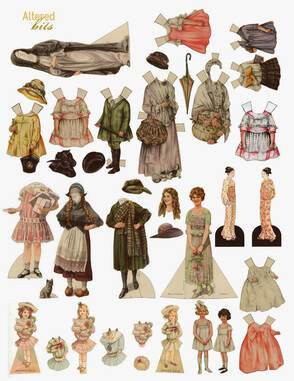 Dress your characters. Dress your characters. Start with their parents: were they loving, cruel, dismissive, encouraging or even absent? Parents are the first influence on a child and therefore the first to influence your character’s personality when they are older. From there you can move onto teachers, peer groups, young adulthood and the dreams and aspirations that come with it. For older characters, the age of Jack Reacher for example, you may want to continue that research into their 20s and even 30s. You dress your characters with their life experiences, their beliefs and their values the same way as you dress them in their clothes, and those things then provide their motivation and/or internal conflicts. If they fight injustice, then what is the injustice they suffered that makes them want to do that? If they are on a quest, what is it they are seeking to find out about themselves along the way? If they are afraid of starting a romantic relationship, what happened in their past that makes them so afraid now? I’m not going to ask all the possible questions; you are the author, they are your characters, you need to ask the questions. But the better the questions you ask, the better your characters will be. 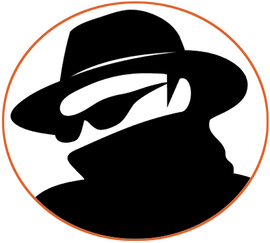 And the same applies to antagonists. We are familiar with the surface level motives of antagonists: love, hate, jealousy, greed, lust for power, revenge, etc. But no one is born seeking revenge. No one is born jealous. No one is born lusting for power. So, what was it in their life that changed them and gave them those surface level motivations? What happened to make a “normal” human being want to rule the world? 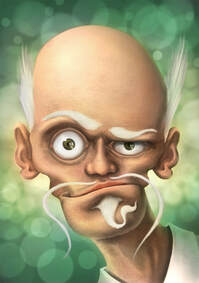 You can throw in psychological motivations, such as psychopathy, sociopathy, narcissism megalomania, paranoia etc but even they require some sort of explanation. If you are going to use them you will need a good grounding in psychology and/or mental health so that you can understand what your antagonist’s backstory has to look like in order for them to suffer from those forms of psychological disorder. If you can come up with two complex characters (protagonist and antagonist), you are going to come up with a complex, layered conflict between them that holds the reader’s attention and has them crying out for more. And if you can come up with those 3 elements, you are going to find a publisher who wants to publish your book. If you have enjoyed this blog, or found it informative, then make sure you don’t miss future editions. Just click on the button below to sign up for our newsletter. We’ll even send you a free ebook for doing so. |
AuthorThis blog is compiled and curated by the Selfishgenie publishing team. Archives
June 2025
|
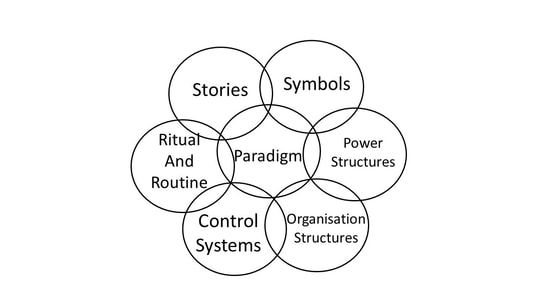

 RSS Feed
RSS Feed